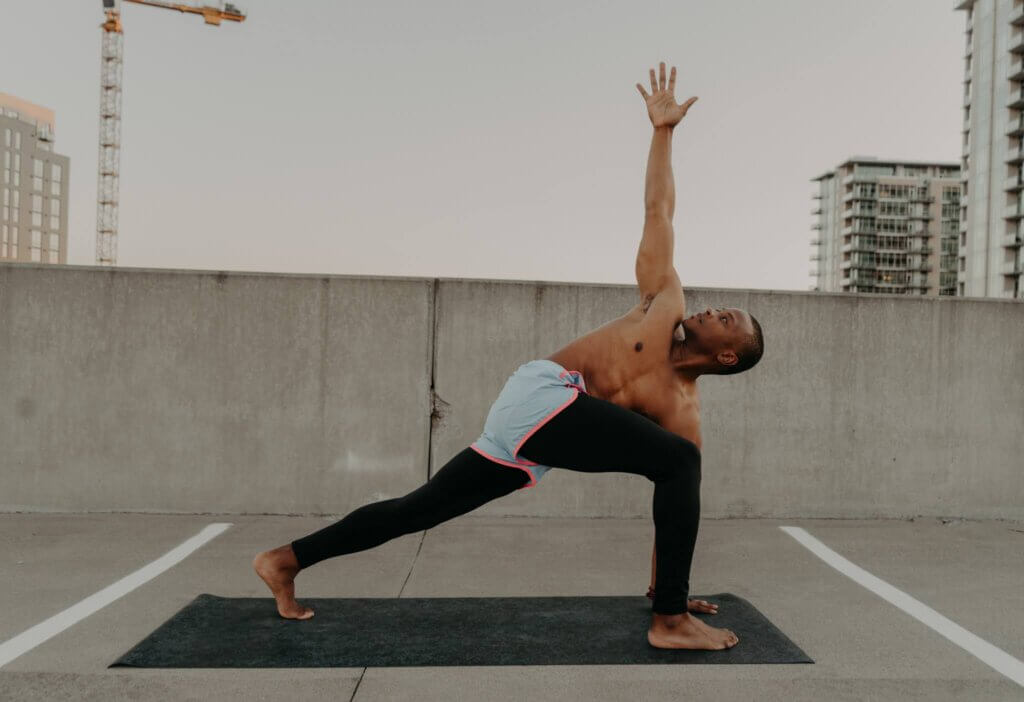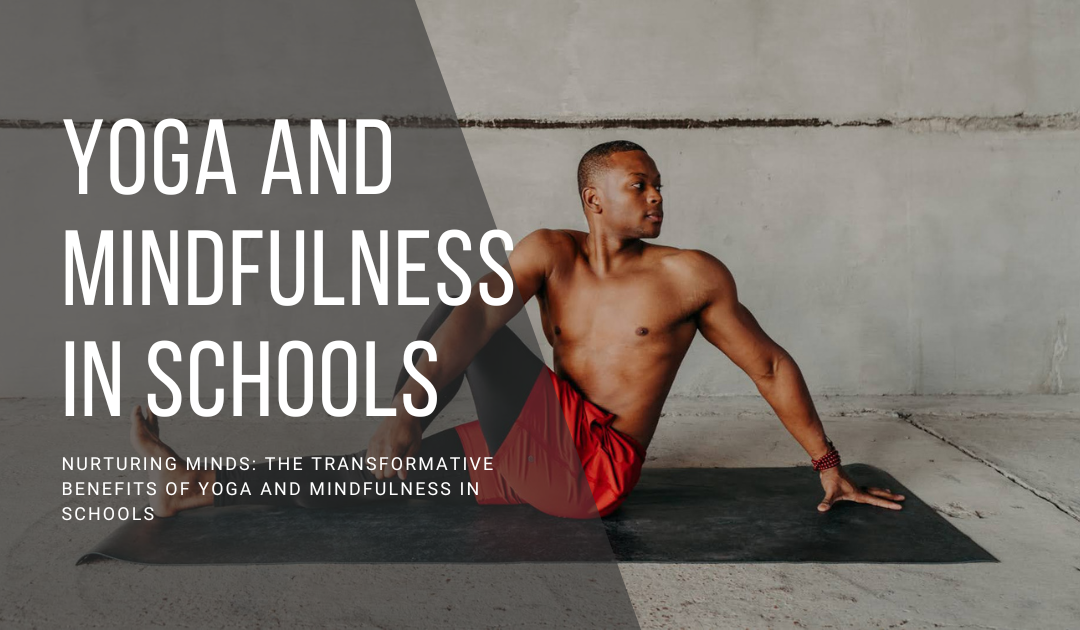In the fast-paced rhythm of the modern world, schools are increasingly recognizing the imperative of nurturing not just the intellect but the holistic well-being of their students. As we navigate an era where academic excellence is no longer the sole metric of success, a profound shift is taking place—one that places the mental, emotional, and physical health of students at the forefront. In this transformative landscape, the integration of yoga and mindfulness practices into the educational framework emerges as a beacon of balance and well-being.
In this blog, we embark on a journey into the heart of mindful learning—a journey where the ancient wisdom of yoga meets the dynamic landscape of contemporary education. Beyond the walls of traditional classrooms, we’ll explore the myriad benefits of incorporating yoga and mindfulness practices into schools, delving into the profound impact they have on stress reduction, emotional regulation, concentration, physical health, and social-emotional learning.
But this exploration is not confined to research findings and educational theories alone. It intertwines with a personal odyssey—a journey from the intensity of college sports to the serenity of the yoga mat, culminating in the decision to become a certified yoga instructor. This intertwining of personal experience with the broader narrative of educational evolution forms the foundation of our exploration.
As we navigate the intersections of ancient practices and modern education, let us envision a future where schools become not just centers of academic excellence but sanctuaries for the holistic growth of individuals. Join us on this quest for mindful learning, where the threads of personal transformation and educational innovation converge to combine well-being, resilience, and compassion.
My Yoga Journey:
As a former college football player accustomed to the grueling intensity of traditional workouts, yoga presented itself as an oasis of tranquility. Initially, my foray onto the mat was merely an attempt to stay physically active without the pounding rigor of the gridiron. However, what I found was far beyond a mere physical practice.

Yoga became my sanctuary—a space where breath harmonized with movement, guiding me into a deeper relationship with myself. The postures were not just exercises; they became gateways to understanding the complexities of my own mind and body and how they interact with the world around them. The transition from the vigorous demands of football to the intentional, mindful practice of yoga marked a significant shift in my overall well-being. In 2021, fueled by an unwavering desire to deepen my understanding of yoga, I undertook the journey to become a certified yoga instructor. The certification process was not only a deep dive into the physical nuances of yoga but also a revelation of the profound impact that mindfulness and intentional breath could have on mental and emotional well-being. That pivotal period remains etched as a profound chapter in my ongoing journey of self-discovery. My personal growth with yoga wasn’t confined to the mat; it was a voyage that reshaped my perspective on life. This evolution birthed a passion—a burning desire to impart the same life-changing practice to others.
The Benefits of Yoga in Schools
Imagine schools not just as hubs of academic learning but as sanctuaries for holistic growth. The benefits of yoga in schools extend far beyond physical exercise. Integrating yoga and mindfulness practices into the curriculum equips students with tools for stress reduction, emotional regulation, and improved concentration. These practices become not just a break from traditional learning but an essential component of fostering resilience and well-being.
In the same way yoga transformed my post-athletic life, it has the potential to revolutionize education. By creating a space where students can explore not only academic subjects but also their own minds and emotions, schools become incubators for empowered, self-aware individuals. This holistic approach not only enhances physical health but also nurtures mental and emotional well-being. Let’s delve into the various benefits of implementing yoga and mindfulness in schools.
1. Stress Reduction and Emotional Regulation: Life can be stressful, even for students. Yoga and mindfulness provide invaluable tools for stress reduction and emotional regulation. By teaching children to be present in the moment, these practices empower them to navigate challenges with greater resilience. Mindfulness, in particular, fosters self-awareness, allowing students to identify and manage their emotions effectively.
2. Improved Concentration and Academic Performance: Numerous studies have shown that incorporating yoga and mindfulness in schools positively impacts students’ attention spans and academic performance. Mindful breathing exercises and yoga poses enhance concentration, providing students with the cognitive tools to excel in their studies. This, in turn, creates a conducive learning environment.
3. Enhanced Physical Health: The physical benefits of yoga are well-established. Integrating yoga into the school day promotes flexibility, strength, and overall physical well-being. By encouraging regular physical activity, schools contribute to the development of healthy habits that can last a lifetime. Additionally, yoga can help address issues such as poor posture, which can arise from prolonged periods of sitting during classes.
4. Social and Emotional Learning (SEL): Yoga and mindfulness practices nurture the development of essential social and emotional skills. Students learn to cultivate empathy, kindness, and cooperation through activities that promote a sense of community. These practices contribute to a positive school culture and help create a supportive environment where students feel emotionally safe and connected.
5. Behavioral Management and Conflict Resolution: Mindfulness practices equip students with tools to manage their impulses and make thoughtful choices. As a result, the incidence of behavioral issues tends to decrease. Furthermore, students learn valuable conflict resolution skills, fostering a peaceful and respectful school community.
6. Building Resilience and Coping Skills: Life is full of ups and downs, and teaching students how to cope with challenges is a vital aspect of their education. Yoga and mindfulness provide a foundation for building resilience by encouraging a non-judgmental awareness of thoughts and emotions. This, in turn, helps students develop healthy coping mechanisms for dealing with stressors both in and out of the classroom.
7. Support for Mental Health: As mental health awareness grows, schools are recognizing the role they play in supporting students’ emotional well-being. Yoga and mindfulness can be powerful tools in the prevention and management of mental health issues, offering students a holistic approach to self-care.
The implementation of yoga and mindfulness in schools goes beyond the physical postures; it is a holistic investment in the well-being of students. By nurturing their minds, schools create an environment that supports not only academic success but also the development of resilient, empathetic, and self-aware individuals. As the educational landscape continues to evolve, the integration of yoga and mindfulness stands as a beacon, guiding schools toward a more comprehensive and compassionate approach to education.
Conclusion:
In the realm of education, where the pursuit of knowledge intertwines with the cultivation of well-being, the integration of yoga and mindfulness emerges as a catalyst for transformative change. As we’ve explored the benefits of bringing these practices into schools, we’ve witnessed a shift from the conventional paradigm of education towards a more holistic and compassionate approach.
From stress reduction and improved concentration to the fostering of resilience and emotional intelligence, the impact of yoga and mindfulness on students is profound. Yet, this exploration transcends statistics and studies—it intertwines with a personal journey, one that transformed a former athlete into a certified yoga instructor. It’s a narrative of self-discovery, a testament to the power of intentional breath, movement, and mindfulness in shaping a more balanced and resilient individual.
As the threads of ancient practices and modern education converge, we envision a future where schools become not just centers of academic learning but sanctuaries for the holistic growth of each student. The journey from the yoga mat to the classroom is a testament to the possibility of creating environments that nurture not only intellectual pursuits but also the well-being of the mind, body, and spirit.
In this pursuit of mindful learning, let us advocate for the integration of yoga and mindfulness practices, recognizing their potential to empower students, foster resilience, and pave the way for a more compassionate and comprehensive educational landscape. The journey continues, and as we navigate this evolving terrain, may the practice of yoga be a guiding light, illuminating the path toward a more harmonious and mindful future in education.
If you want to learn how yoga can transform your school and empower your students, contact me today!



